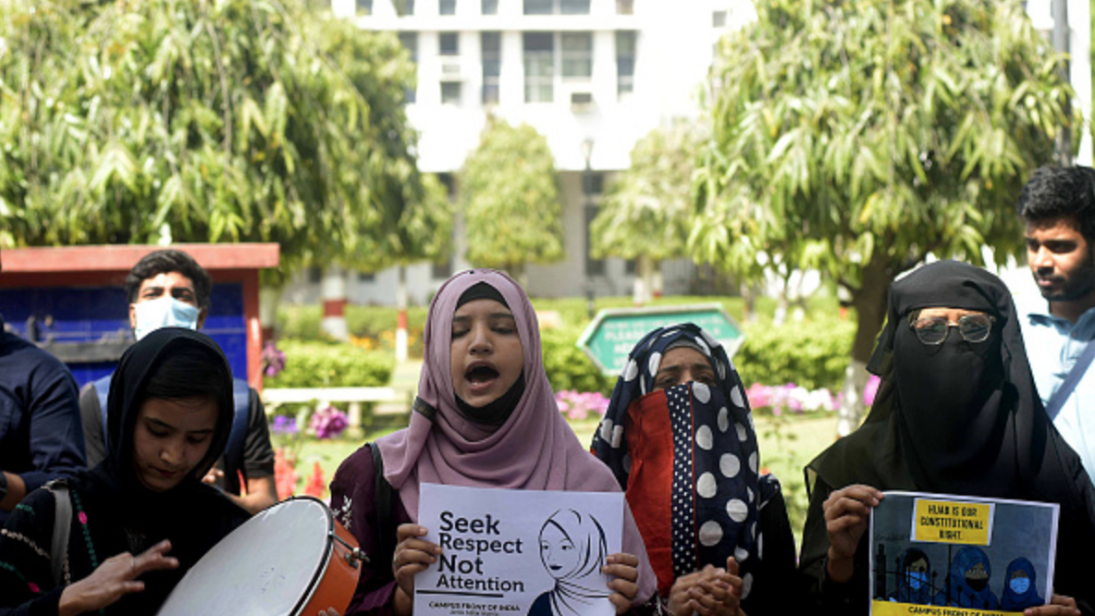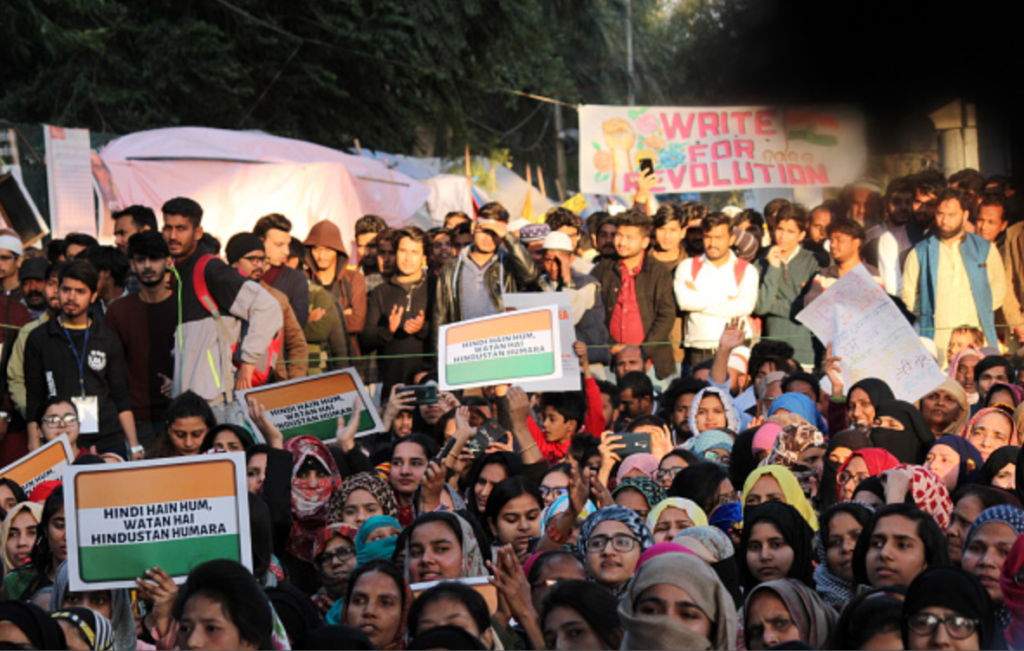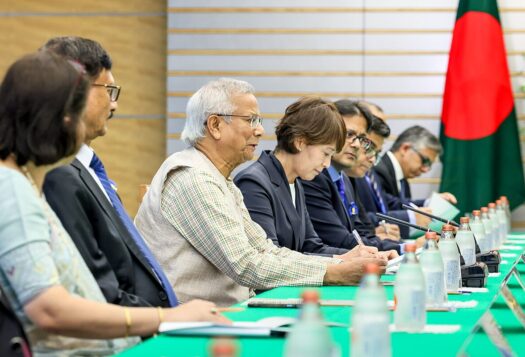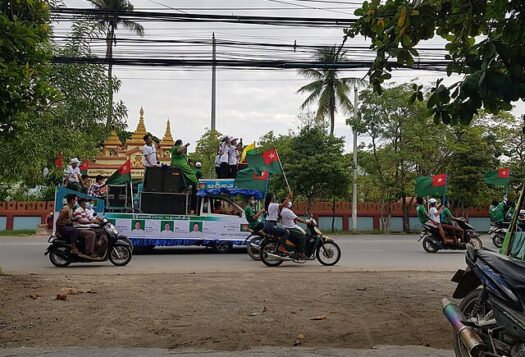
India has witnessed escalating domestic tensions, calibrated around particular religious/ communitarian practices, performances, and symbols. Part of a larger rise in Hindu majoritarianism, campaigns seeking to control religious expression have often been mapped on to public spaces, crucially spelling a disturbing dynamic of exclusion and effacement. These campaigns’ periodic orchestration/enactment is leading to and gradually systematizing the select expulsion of designated identities by eliminating their everyday manifestations and markers from the public space. Through a series of targeted campaigns, ascendant Hindu nationalist forces are attempting to push these identities into the private sphere, invisibilize them and, over time, render them unknowable.
Nation-wide limits on Muslim public expression
Over the past few months, Gurugram, Haryana’s prime business hub and one of Delhi’s thriving satellite cities, has been swept by a vicious campaign to stall the performance of Friday namaz (prayers) outdoors. Some Hindu Right outfits have called for an end to the practice. They have exerted immense pressure on the Gurugram administration and local Muslims to further this demand. Their calls have translated into concerted on-ground action, with many Hindutva supporters and activists storming designated spaces—vacant plots of land, parks and other such stretches, allocated by the administration for the performance of namaz. Week after week, Hindutva activists have sought to wrest these sites on Fridays, amidst widespread administrative passivity. They disturbed prayer congregations, raised bigoted slogans, and stoked unbridled hatred and hostility. They also conducted Hindu rituals, including havans (worship centered on holy fire), on the occupied sites, in order to obstruct and counter the performance of namaz there. This matter is still pending before the Supreme Court, awaiting redress.
Hindu nationalist forces are attempting to push Muslims into the private sphere, invisibilize them and, over time, render them unknowable.
The Haryana Chief Minister’s statement, urging Muslims to perform religious ceremonies at home and their places of worship reveals the state government’s line on the issue: to systematically expunge the religious-cultural presence of Muslims from the street and isolate the community even further. He was reported saying: “The practice of offering namaz in open spaces will not be tolerated … If somebody offers namaz or holds paaths [religious recitations] at one’s place, we have no objection to that. Religious places are built for this very purpose that people go there and offer prayers. Such programmes should not be held in open spaces.”
Hindu majoritarianism, routinely tapping into a corpus of Hindu religious myths, signifiers and images, is quick to rally against public expressions of faith by members of other communities, particularly Christians and Muslims. Hindu nationalists, who often wear their religion on their sleeve, readily denounce (c)overt displays of religiosity by these minority communities. The furor that has erupted in the state of Karnataka, more than a thousand miles from Haryana, over the issue of wearing of hijabs (head scarves) in educational institutions, serves as a disturbing illustration of this phenomenon. In many districts across Karnataka hijab-clad students have been barred from entering educational institutions and asked to observe the prescribed dress code. They have been stopped for not following the diktat on uniforms. Several state ministers have backed these moves and made their stance clear: “The students coming to colleges/schools need to follow the uniform mandate … Hijab is not part of the uniform. Hence, you cannot wear it in schools or colleges.”
This controversy has manifested itself in different and deeply troubling ways. In Karnataka, increased heckling and catcalling of hijab-clad women have been reported. Bands of Hindu Right supporters, donning saffron shawls as a counter to the hijab, have been allowed to storm colleges, generating pressing safety concerns. The state government has failed to take any decisive action to prevent this deliberate communalization and merely reiterated its stance on wearing proper uniforms in schools and colleges.
Many female students have been facing flak over the question of hijab in their spaces of learning. This prompted a group of girls to approach the Karnataka High Court to intervene in the matter, in order to prevent their ongoing, institutionalized harassment. However, in its verdict, delivered in response, the Court has upheld the state government’s order, banning the wearing of hijabs in educational institutions in Karnataka. Statements by sitting ministers have made no attempts to allay emanating fears or soothe tensions. For instance, Karnataka’s Home Minister felt content to only suggest that “to follow our religions, we have our worshipping places and all this [wearing of hijabs] can be done there … Students should follow the rules set by the school.”
Though the controversy has erupted in the state of Karnataka, its impact can be felt over a much wider canvas of India. Citizens have felt its tremors across different parts of the country. The Madhya Pradesh School Education Minister advocated for a ban on the hijab and imposition of a strict dress code in schools, a position on which he subsequently backtracked. Soon after, a Bhopal MP added yet another disturbing tirade to the string of rabble-rousing remarks, pouring forth in the wake of the hijab controversy. She instructed Muslim women to wear hijabs within their own homes and madrasas, in short, designated Muslim spaces, and to abstain from this practice outside. The reason she offered for espousing a ban on the hijab in public spaces, including educational institutions, was that Hindus, who worship women and treat them like Goddesses, can never be evil-intentioned. According to these BJP leaders, public spaces, inscribed as expressly Hindu, present no potential threat to Muslim women’s safety.

Public vs. Private Space
Oft pronounced warnings to Muslims to limit their religious/cultural practices and symbols to their own spaces seek to establish and cement a public-Hindu, private-Muslim dichotomy. Muslims can indulge in their everyday displays of Muslimness—performance of namaz, wearing of hijab or any other, provided they do so within their private realm. BJP leadership repeatedly caution and its supporters often intimidate Muslim citizens to refrain from these displays in what is cast as a steadily homogenizing Hindu public realm. Faced with immense pressure, many Muslims are increasingly compelled to conduct themselves in public spaces as essentially disembodied beings in religious and communitarian terms, invisibilizing all identifiers. Yet even here they encounter blatant discrimination: the attempts to obscure and efface their religion leave Muslims open to the charge of deceit and duplicity. They can, at will, be accused of deception and deliberate concealment of their religious identity.
Spaces are divided into the Muslim (Muslim homes, madrasas and mosques), and the Hindu (schools, colleges, roads, parks and practically all other public spaces).
If Muslim homes, madrasas and mosques are the assigned spaces for Muslims to practice their religion and demonstrate associated cultural markers, the outside of those spaces is readily recast as Hindu, where such observances and markers have no place or acceptance. Spaces are divided into the Muslim (Muslim homes, madrasas and mosques), and the Hindu (schools, colleges, roads, parks and practically all other public spaces). This notional splitting of spaces draws from and simultaneously strengthens the belief that Muslims and Hindus represent two mutually exclusive and opposing collectivities. These attempts at demarcation and/or barricading of Muslims have to be viewed against the backdrop of the country-wide protests that broke out against the Citizenship Amendment Act (CAA) and the National Register of Citizens (NRC) over two years ago. What CAA and NRC sought to accomplish was to tie Indian citizenship inextricably to religion. The protests that erupted in response contested this interlinking. Hordes of citizens, including avowedly Muslim citizens, took to the streets and other public spaces, screaming injustice. These protests invited undisguised hostility from the Indian state and wide sections of the country’s media. The protestors were dubbed anti-nationals, vilified for being motivated by financial rewards, hounded, and even attacked. But they held their ground and steadfastly demanded the delinking of citizenship from considerations of religion. This defiance was not to be countenanced; the Muslims had to be pushed back and put in their place. They, along with their religious-cultural symbols, had to be expelled from the public realm and confined to their private spaces. The ensuing COVID-19 pandemic and lockdowns provided easy cover for that. The current efforts to ban the namaz and hijab in public spaces are seeking to actively invisibilize Muslims.
***


